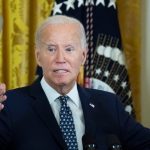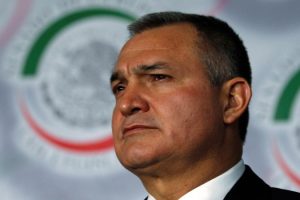First modification: Last modification:
Havana (AFP) – Cuban President Miguel Díaz-Canel is preparing to be re-elected without surprises by the National Assembly of People’s Power (ANPP) this Wednesday, April 19, for a second and final term, as dictated by the country’s Constitution. The leftist leader is preparing to assume a new period of government in the midst of the biggest economic crisis on the island in three decades.
The President of Cuba, Miguel Díaz-Canel, is preparing to assume a second and last period of Government.
After the parliamentary elections last March, the National Assembly of People’s Power (ANPP), the country’s Legislature, is expected to report on Wednesday, April 19, who are the candidates for the Presidency and Vice Presidency. There will be only one candidate for each office in this country where opposition is illegal.
The 470 deputies of the Assembly will elect both positions by absolute majority and by direct and secret vote.
But it is expected that the Parliament, made up of an immense majority of members of the Communist Party, appoints the current president to continue in the Executive.
The law establishes that the president, who has a five-year term, can be re-elected only once.
In the parliamentary session, the appointment of the 21 new members of the Council of State, which constitutes the directive of the National Assembly, will also be voted on.
The 62-year-old ruling leader, an electronic engineer by profession, has governed the island since 2018, when he became the first civilian to take the reins of the country after the successive terms of the brothers Fidel and Raúl Castro, who held power since the triumph of the Cuban Revolution in 1959.

Díaz-Canel came to power with the task of accelerating the slow economic reform begun by his predecessor and political mentor, Raúl Castro, when the current crisis on the island began.
At the beginning of 2021, he implemented a monetary reform that ended the rate of one dollar for one Cuban peso that had prevailed for decades and caused great distortions in the national economy.
“I feel dissatisfied”
Among other measures, Díaz-Canel promoted independent work and gave the green light to SMEs. However, these reforms were insufficient to improve the financial situation of the nation.
Political analyst Arturo López-Levy points out that although the Díaz-Canel government has promoted laws that give constitutional support to the economic model designed since 2011, “it has not made a complete and comprehensive transition to a mixed economy.”
“Some economic changes have not taken place, and others that have taken place have left a lot of skepticism about their implementation,” estimates the expert.
The monetary reform caused an inflationary spiral and a strong devaluation that have irritated the population.
The Cuban currency shot up in two years from 24 to 120 pesos per dollar, at the official rate, while on the black market it is quoted at 185 pesos per currency.

Currently, Cuba is going through its worst economic crisis in the last 30 years, with shortages of food, medicine and fuel, due to the tightening of the US embargo, in force since 1962, and the effects of the Covid-19 pandemic, which the Administration de Díaz-Canel managed to control it with three national vaccines.
“I feel dissatisfied” for not having been able to “promote a group of actions that are more efficient, more effective, in solving these problems,” said the president during a recent interview in Havana with the pan-Arab television channel Al Mayadeen. ‘.
For the opponent Manuel Cuesta, his “re-election” is “sung” and occurs “in the midst of a double crisis at the economic level: of the model and of the political powers of the State to guide appropriate solutions.”
Stuck in “continuity”
One of the “few achievements” attributable to the president has been to lead “the transition to a regime headed by a new generation born after 1959 that does not bear the last name Castro,” considers Jorge Duany, an academic at Florida International University.
However, Duany points out that his “biggest failure was the poor handling of the protests” in July 2021, the largest on the island since 1959, which left one dead, dozens injured and more than 1,300 imprisoned, according to the organization Miami-based Cubalex human rights.

After the demonstrations, an unprecedented migratory exodus was registered: more than 300,000 Cubans left the island, only in 2022.
The head of state has been able to manage the threads of the transition between the historical generation and the one he represents, but he has been trapped in his slogan of being “continuity”, says López-Levy.
“He has proclaimed himself a president of continuity when what the country is asking for and even the agenda of the Communist Party itself is an agenda of continued change,” the analyst concludes.












